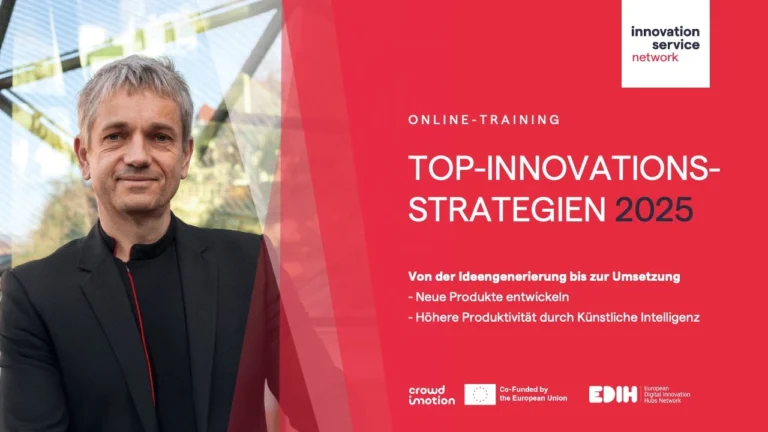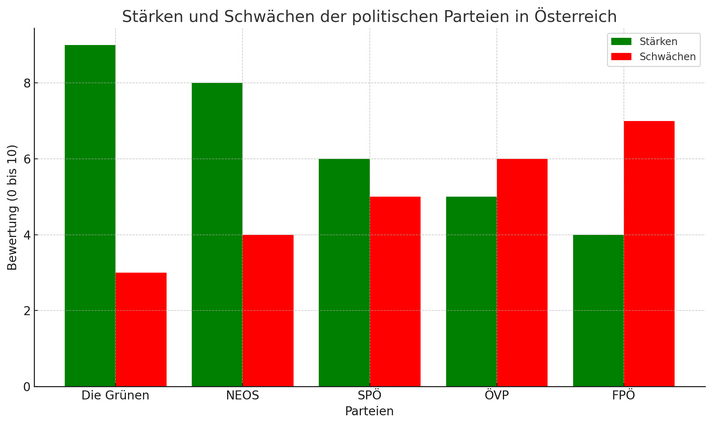

When companies are looking for budget cuts, there are usually three areas they target: training, innovation, and marketing. Is this smart? No, but in some management circles, there’s still the belief that these areas can wait. There used to be a saying about marketing budgets: "50% of the budget is wasted, you just don't know which 50%." This perception is outdated now, as digital marketing trends have made outputs, such as "conversion," measurable.
Innovation and training, or competency building, are the foundation for a company's future and increasingly require attention and resources given the rising pace of innovation. In the realm of "innovation management" – if such a position exists within the company – budget cuts are particularly painful. While the personality profile of an innovation manager can usually handle frustration and setbacks, it is still a critical signal to the workforce when budget cuts are made in areas related to the future. "Engaged smart minds" will draw their own conclusions from this, and there is a risk of losing "high potentials."
There is a significant difference in resource needs between focusing solely on improvement and suggestion management or, at the extreme, spinning off the results of an internal innovation project into a separate legal entity. However, modern innovation management addresses not just these two extremes but also deals with innovation strategies, method training, idea management, service design, technology monitoring, product life cycles, roadmaps, funding, digitalization, intellectual property rights management (IPR), R&D collaborations, startup scouting, prototype development, business model development, partnership management, knowledge transfer, and more.
Industrial innovation management in the late 20th century primarily focused on two areas: improving existing products and processes and determining the right time to invest in new product development. In many cases, innovation management was synonymous with product development in both concept and practice. The drivers for this approach were product life cycles entering the saturation phase or technological leaps. In the 21st century, the need for change and innovation has increased across nearly all areas of business. In addition to new product development, accompanying services have become a new innovation goal, and with the rise of digitalization, value creation processes and, more recently, business models have undergone significant changes.
Companies are thus engaged in completely rethinking the overall logic of integrating all minds and resources, as well as their interaction with customers. A significant leap was the virtualization of product differentiation: the physically identical engine can be set through software adjustments to any power value between 90 and 150 kW, maintaining acceptable emissions across all power ranges. This allowed for initial steps towards customizing solutions for customers while retaining the benefits of industrial mass production. With the digitalization of innovation management, it became possible to integrate end customers into the innovation process. As a result, digital tools and knowledge networking have become essential components of innovation management.
Depending on a company's innovation awareness and intensity, it may require anywhere from 1 to 2 individuals or a dedicated innovation department with 20 to 30 people to cover the essential functions and competencies. This investment ultimately needs to be recouped through new products, services, and solutions in the market. Since this often takes longer than a single budget period, i.e., a calendar year, significant effort is needed to persuade stakeholders. Demonstrable and measurable innovation successes often lie several years in the future.
In many companies, allocating more budget to future projects means that resources for operational business would be lacking. For executives with a variable compensation component tied to short-term business success, choosing to invest in the future or innovation can result in lower income for the current year. In management-led companies with a 4-year board commitment, this creates a tension that is more easily overcome in owner-managed family businesses, where long-term company development takes precedence. Below, I would like to list a few ideas that could help establish a higher innovation budget:
When executive bonuses are directly linked to the long-term performance of the company, innovation will also gain higher priority. Therefore, innovation should be a fundamental component of the corporate strategy and be embedded in the company's long-term goals. This creates an incentive to achieve these strategic objectives. Companies can establish measurable performance indicators (Key Performance Indicators) to evaluate the success of innovation efforts. For example, a KPI might be the revenue share of new products (not older than...) relative to total revenue.
Innovation efforts should aim to create comprehensive "stakeholder value" rather than just shareholder value. In addition to bonuses and incentives for executives, employee participation can also be highly effective. In times of skilled labor shortages, this enhances job attractiveness and employee retention. In digital innovation systems, it is also possible to quickly identify who the key drivers of innovation activities are. Recognition and visibility of these outstanding individuals provide a crucial boost to the company's innovation culture. Network-based companies often make decisions about innovation projects collectively through corporate crowdfunding models. In these models, selected employees are typically given small innovation budgets that they can allocate to projects themselves.
According to the latest compensation report from Kienbaum, between 75% and 96% of executives receive a bonus. However, it is not clear to what extent long-term innovation goals are rewarded within this framework. To achieve greater sustainability and resilience in corporate development, it will be necessary to focus even more on strategic management and innovation. The size of the innovation budget defines the speed and intensity of work on future projects in the next budget year.
What is the size of the innovation budget in your company? Is long-term positive company development rewarded?
As always, I look forward to feedback and wish you a relaxing and creative Sunday!
Reinhard Willfort, Innovation Doctor, www.willfort.at





